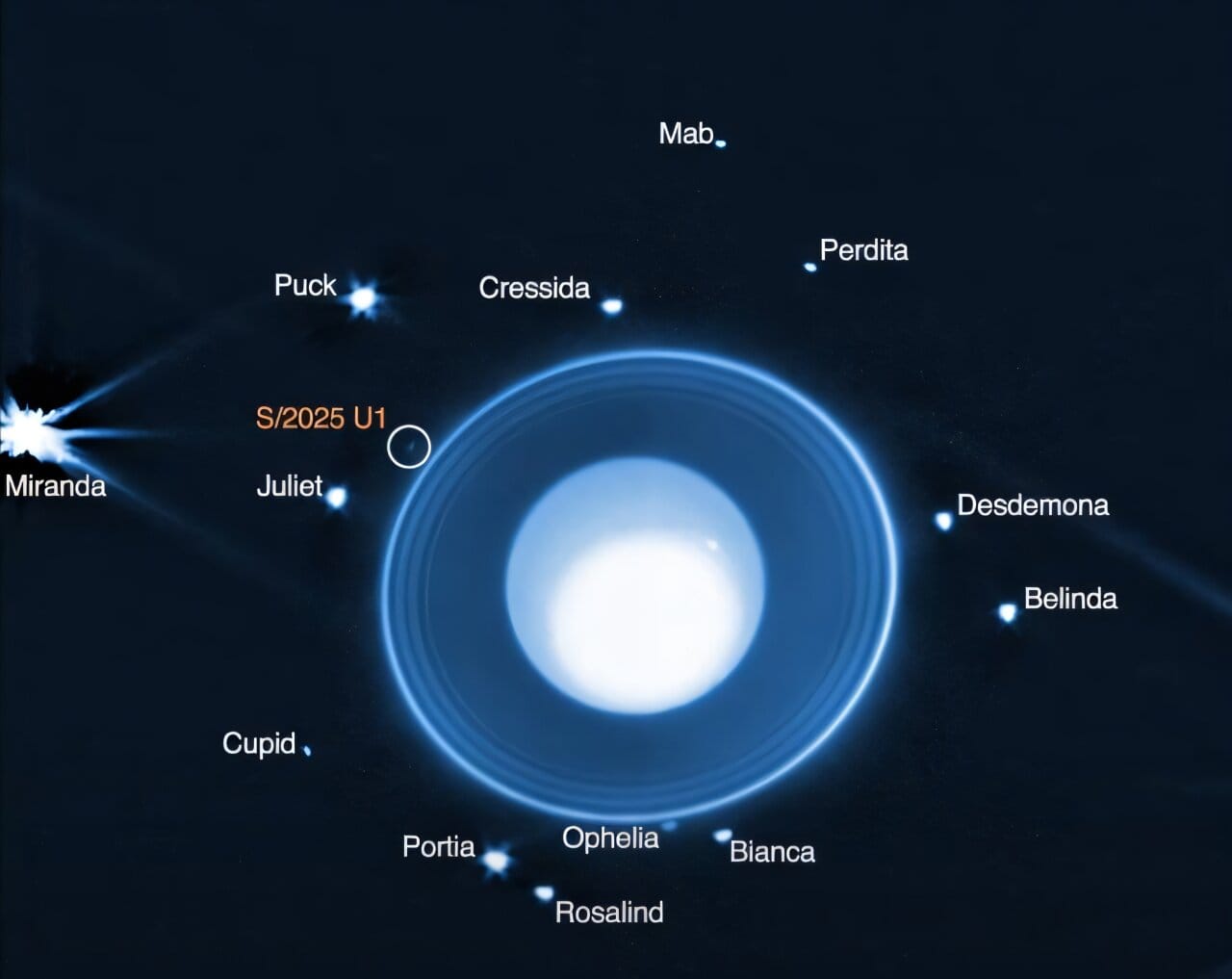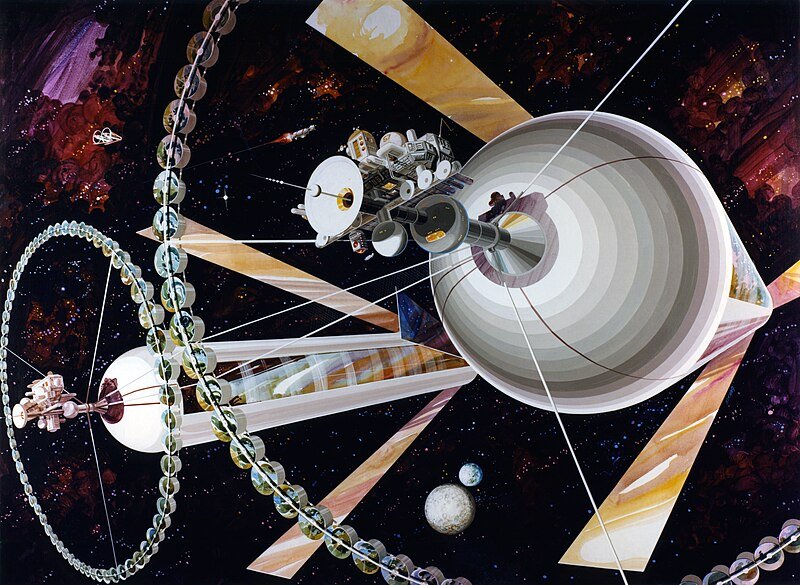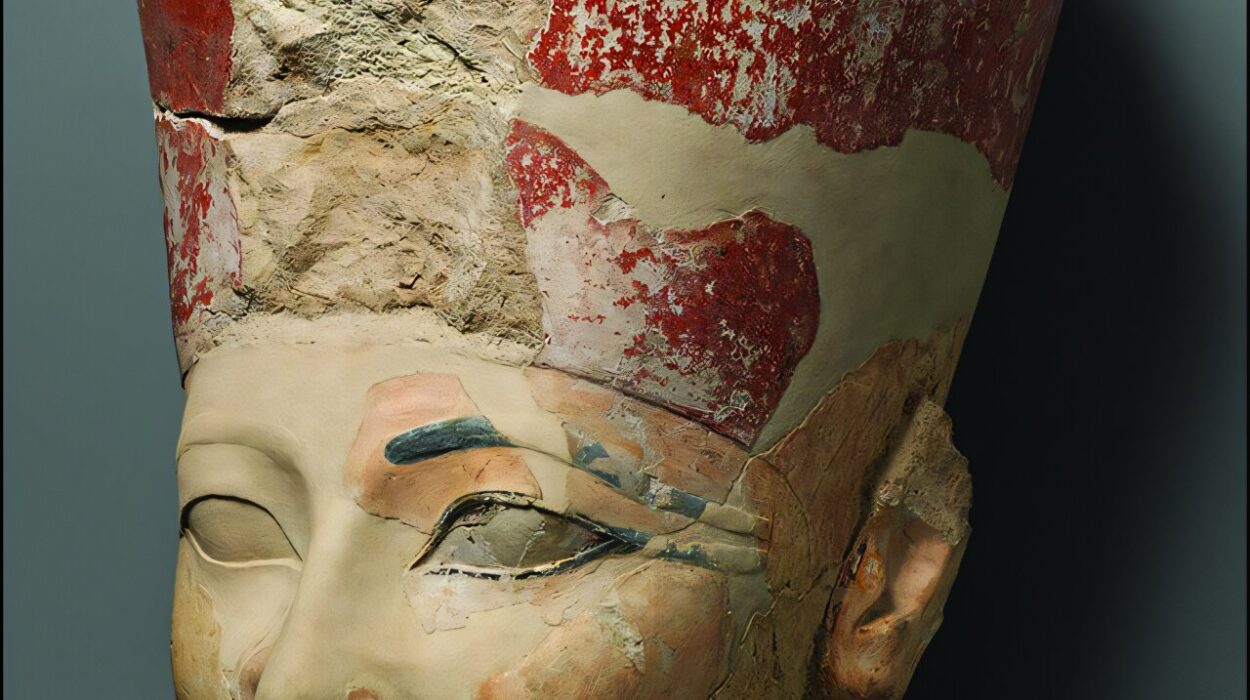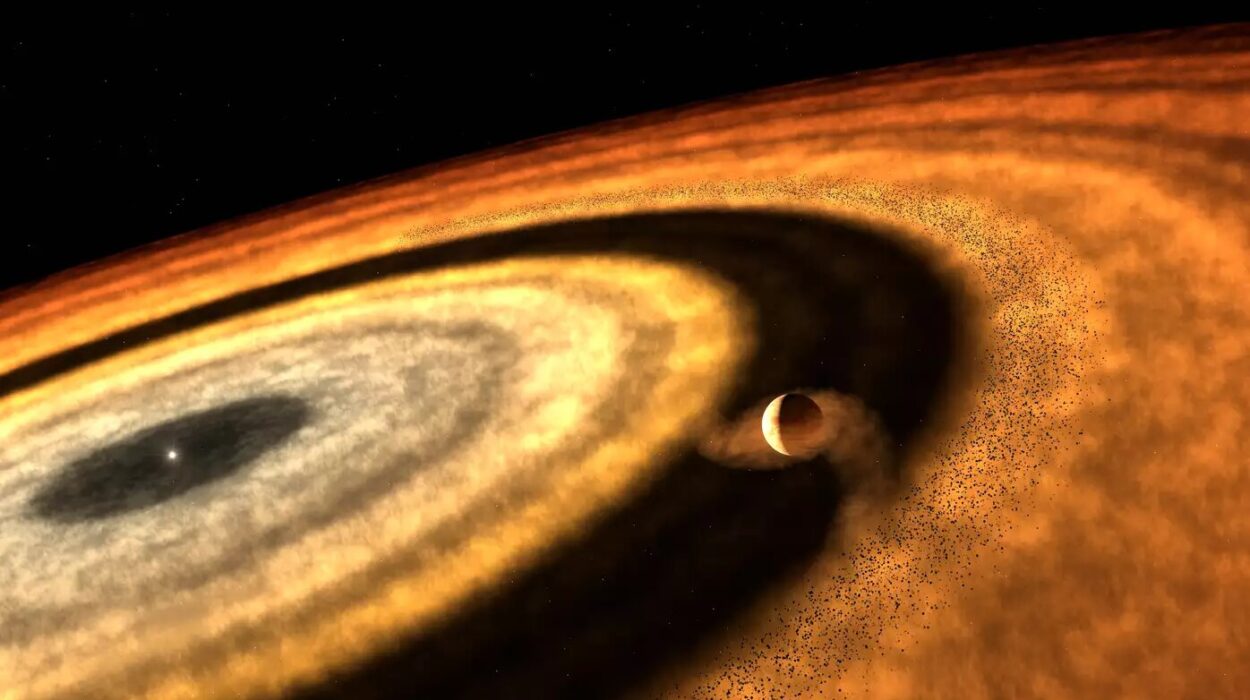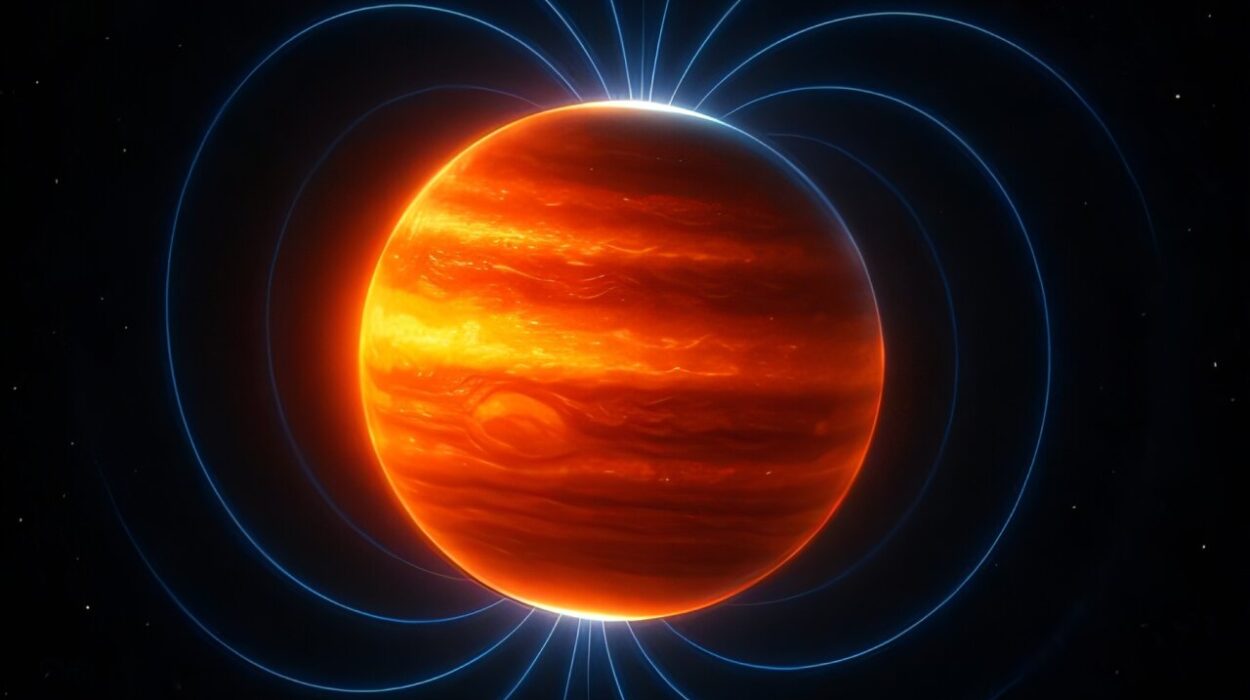On February 2, 2025, the James Webb Space Telescope (JWST) added a fresh chapter to humanity’s exploration of the solar system. While gazing at the distant ice giant Uranus, Webb’s powerful eyes uncovered something Voyager 2—the only spacecraft ever to visit the planet—missed nearly 40 years ago: a brand-new moon.
The discovery, made by a team led by the Southwest Research Institute (SwRI), reveals a previously unknown satellite only six miles (10 kilometers) across. In cosmic terms, it’s a pebble circling a giant. Yet this tiny body carries enormous significance, pushing Uranus’s known moon count to 29 and deepening the mystery of a planet that remains one of the least understood worlds in our solar system.
“This object was spotted in a series of ten 40-minute long-exposure images captured by the Near-Infrared Camera (NIRCam),” explained Maryame El Moutamid, lead scientist at SwRI. “It’s a small moon but a significant discovery, which is something even NASA’s Voyager 2 spacecraft didn’t see during its flyby nearly 40 years ago.”
With this revelation, Uranus reminds us once again: even the familiar worlds in our own backyard still hold secrets waiting to be found.
The Moon That Voyager Missed
In January 1986, Voyager 2 made history by flying past Uranus, offering humanity its first—and so far only—close-up views of the planet. The spacecraft revealed 10 previously unknown moons and a delicate ring system, transforming a faint, bluish dot in the sky into a world rich with complexity. But Voyager’s cameras had limits. Small, faint objects were easy to miss, especially against Uranus’s bright glare.
The new Webb discovery illustrates that limitation vividly. At only six miles across, the moon is smaller and fainter than any of Uranus’s known inner satellites. Even Earth’s most advanced ground-based telescopes could not catch it. Only Webb, with its extraordinary sensitivity to infrared light and ability to peer deep into the shadows of the solar system, was capable of pulling this little world into view.
A Crowded and Chaotic Neighborhood
What makes Uranus’s system so fascinating is not just its number of moons, but how strange and intertwined they are with the planet’s rings. Unlike the giant, stately satellites of Jupiter or Saturn, many of Uranus’s moons are tiny, irregular, and packed into a tight orbital dance.
“No other planet has as many small inner moons as Uranus,” said Matthew Tiscareno of the SETI Institute, a member of the discovery team. “Their complex inter-relationships with the rings hint at a chaotic history that blurs the boundary between a ring system and a system of moons.”
The new moon, the 14th member of Uranus’s small inner-moon family, orbits about 35,000 miles (56,000 kilometers) from the planet’s center. It sits between the orbits of Ophelia—just beyond Uranus’s main ring system—and Bianca. Its nearly circular orbit suggests that it may have formed right where it is today, a remnant of the processes that shaped Uranus’s rings and moons billions of years ago.
A Moon Waiting for Its Name
Like all of Uranus’s satellites, the new moon will eventually receive a name drawn from the works of William Shakespeare or Alexander Pope. This long-standing tradition gives Uranus’s moons a poetic quality unmatched elsewhere in the solar system, with companions named Ariel, Titania, Oberon, Puck, and Miranda.
But naming will take time. First, the International Astronomical Union (IAU) must officially confirm the discovery and approve a designation. Until then, this tiny world remains nameless—a shadowy new member of Uranus’s celestial stage, waiting for its character to be revealed.
A New Eye on the Outer Solar System
The discovery was made as part of Webb’s General Observer program, which allows scientists across the globe to propose investigations using its instruments. For outer solar system science, Webb’s NIRCam is proving revolutionary. By detecting faint, distant objects in infrared wavelengths, the telescope can uncover features invisible to previous generations of observatories.
“Through this and other programs, Webb is providing a new eye on the outer solar system,” El Moutamid noted. “Its high resolution and infrared sensitivity make it especially adept at detecting faint, distant objects.”
This discovery doesn’t just add a moon to Uranus’s tally—it demonstrates Webb’s power to keep uncovering surprises in our own solar system, not just in distant galaxies.
Building on Voyager’s Legacy
Perhaps the most poignant aspect of this discovery is how it connects past and future. In 1986, Voyager 2 gave humanity its only close-up look at Uranus, revealing rings, storms, and moons that astonished scientists and the public alike. Nearly four decades later, Webb has built upon that legacy, showing us that there is still more to learn about this enigmatic planet.
“Looking forward, the discovery of this moon underscores how modern astronomy continues to build upon the legacy of missions like Voyager 2,” said El Moutamid. “Now, nearly four decades later, the James Webb Space Telescope is pushing that frontier even farther.”
As NASA and the scientific community debate sending a new mission to Uranus—something the National Academies of Sciences has identified as a top planetary science priority—the discovery adds fresh urgency. Each new moon is a piece of a larger puzzle, offering clues about how Uranus formed, how its rings evolved, and how icy worlds across the cosmos may behave.
A Universe That Still Surprises
In a way, this small moon serves as a reminder of something profound: the solar system is not finished telling its story. Even the planets we’ve known for centuries, mapped by telescopes and visited by spacecraft, still hold mysteries just beyond the edge of sight.
The James Webb Space Telescope has given humanity the ability to see deeper, clearer, and farther than ever before. And sometimes, what it finds isn’t a galaxy billions of light-years away, but a tiny moon circling a lonely planet in our own cosmic neighborhood.
As scientists look toward Uranus with renewed curiosity, this discovery speaks to a larger truth: the universe, vast and ancient, still has surprises waiting for us—and we are only just beginning to uncover them.
